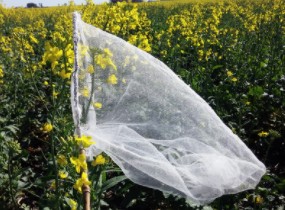The team also looked at what pollinators were present in the canola fields. The types of pollinators, quantity of pollinators, and diversity of pollinators visiting crop fields are all important factors.
Honey bees were the most common and important pollinator. Researchers also found native species, such as types of hoverflies, flies, butterflies, wasps, and carpenter bees. Some of the species were found pollinating canola for the first time.
“The number of pollinating species is important because a higher diversity means more chance of fertilization and seed production in this crop,” Mazzei says. “Seeing new species of pollinating insects in this crop allows us to make better recommendations to help semi-natural habitats. It also helps design future ideas to help the pollinators.”
The research team offers many strategies for increasing the number of pollinators. The most important is to diversify the landscape to make it more welcoming to pollinators. This can start with diversifying the crops themselves.
“A diversity of crops that bloom at different times will attract more pollinators throughout the year,” Mazzei explains. “Having a lot of the landscape be the same crop reduces the stability of pollinating species and how many there are.”

Nets are used to collect pollinating insects on canola flowers. Only the insects that are feeding on the flower are captured for later identification in the laboratory.
“These plots of diverse crops should be merged with semi-natural habitats,” she adds. Having semi-natural areas throughout the landscape helps pollinators move between them.
“These sites provide shelter, nesting sites, and different food items for the pollinators along the season,” says Mazzei. “The main policy recommendation to help crop pollination is having a minimum level of semi-natural habitats around crop plots.”
Click here to see more...